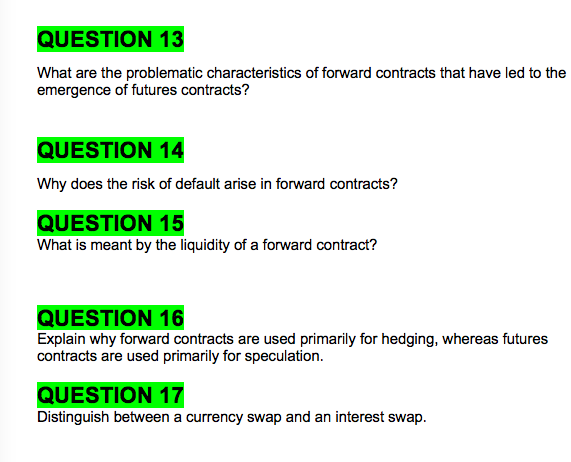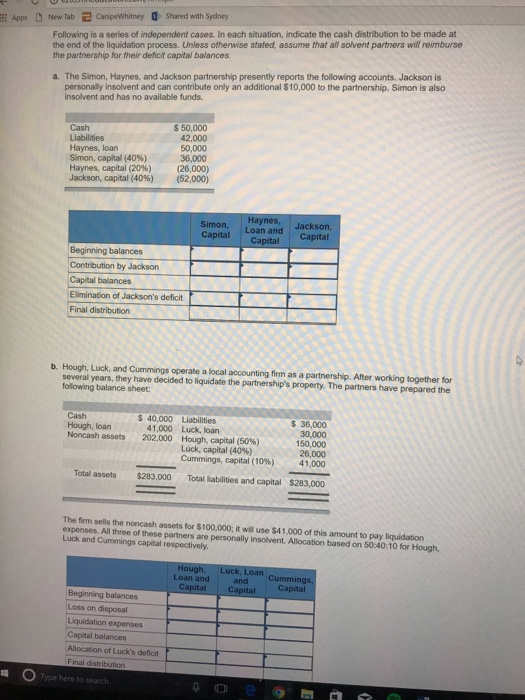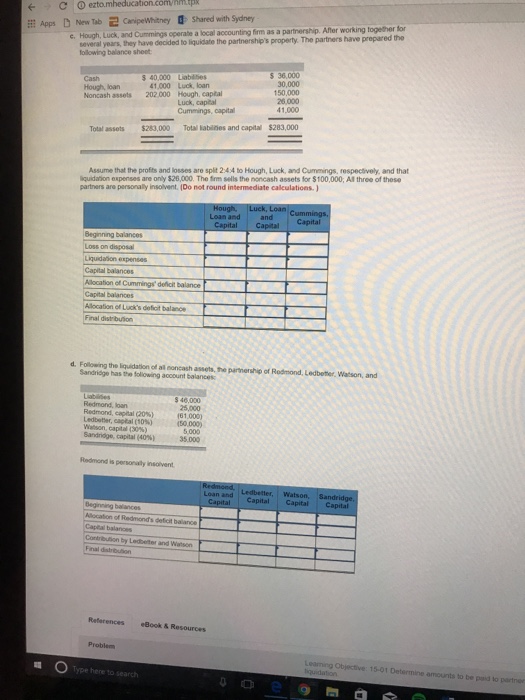




Sasha and Emi are two friends who met when they worked together as chefs at a famous restaurant in New York, but both have now moved to Adelaide. They have decided to set up their own restaurant which will 'fuse' the best of the cuisines of Japan (where Emi was born) and Australia (where Sasha comes from. Each of them has come from New York with $100 000, which they want to invest in the new business.
(a)They decide that a company would be the best structure for their situation. Sasha and Emi would be the two directors.
They want to reflect their own names in the business so they call it Sashemi.
Advise them what registration steps they need to take to be able to trade as a company, and with this business name
(b)They decide to issue 10000 $10 shares to each of them, reflecting the capital they have equally contributed.
Emi's situation is quite straightforward. She is single with no family in Australia. She intends to simply own her shareholding in her own name.
Sasha, on the other hand, has a partner, who is a doctor, and two young children. Before her spell in New York, Sasha and her partner established a Family Trust, and Sasha wants her interest in the new company Sashemi Pty Ltd, to be held through the family trust.
Advise Sasha whether, and if so how, her interest in the restaurant company can be held through the family trust.
(c)It is one year after the company was incorporated, and business is going well. An important Japanese trade delegation visits Adelaide, and the restaurant hosts a banquet for them. Unfortunately the banquet, designed to showcase local produce, includes a mushroom which may have been poisonous, and was picked by Sasha in the local forest. The husband of one of the visiting delegation becomes seriously ill. He is in hospital for several weeks, which causes great expense and delay, including him missing key acting auditions back in Japan, and causes anxiety to his wife, not to mention embarrassment to the local government.
Emi is for furious with Sasha her careless mushroom-collecting. When the visitor starts proceedings against the restaurant for a six-figure sum, Emi says that as it is Sasha's fault, Sasha or her family trust should be liable to pay the damages.
If the proceedings are successful, where does the liability to pay the damages lie?
(d)It is three months after the mushroom affair, and it turns out the restaurant won the proceedings. (An expert witness showed that mushroom wasn't poisonous to humans, and that the visitor had an unknown allergy to all mushrooms).
However, the publicity of the trial has been really good for Sashemi's business. They have full bookings for the next three months.
Sasha and Emi now think that they need to open a more informal version of the restaurant, catering for breakfast and lunch in the city and helping with the increased demand.
They need more capital to fit out the new premises in the CBD. They would also like to bring more investors on board and have many friends and customers interested.
Advise them whether they need to convert to a different type of company in order to expand and take on more capital and thus shareholders.
QUESTION 13 What are the problematic characteristics of forward contracts that have led to the emergence of futures contracts? QUESTION 14 Why does the risk of default arise in forward contracts? QUESTION 15 What is meant by the liquidity of a forward contract? QUESTION 16 Explain why forward contracts are used primarily for hedging, whereas futures contracts are used primarily for speculation. QUESTION 17 Distinguish between a currency swap and an interest swap.Apps ) New Tab CanipeWhitney 0 Shared with Sydney Following is a series of independent cases. In each situation, indicate the cash distribution to be made at the end of the liquidation process. Unless otherwise stated, assume that all solvent partners will reimburse the partnership for their deficit capital balances. a. The Simon, Haynes, and Jackson partnership presently reports the following accounts, Jackson is personaly insolvent and can contribute only an additional $10,000 to the partnership. Simon is also insolvent and has no available funds. $ 50,000 Liabilities 42,000 Haynes, loan 50,000 Simon, capital (40%) 36.000 Haynes, capital (2096) (26,000) Jackson, capital (40%) (52,000) Simon, Haynes, Capital Loan and Jackson. Capital Capital Beginning balances Contribution by Jackson Capital balances Elimination of Jackson's deficit Final distribution b. Hough, Luck, and Cummings operate a local accounting firm as a partnership. After working together for several years, they have decided to liquidate the partnership's property. The partners have prepared the following balance sheet: Cash $ 40,000 Liabilities $ 36,000 Hough, loan 41,000 Luck, loan 30.000 Noncash assets 202,000 Hough, capital (50%%) 150,000 Luck, capital (40%) 26,000 Cummings, capital (10%) 41.000 Total assets $283,000 Total Habilities and capital $283,000 The firm sells the noncash assets for $100,000; it will use $41,000 of this amount to pay liquidation expenses, All three of those partners are personally insolvent. Allocation based on 50:40:10 for Hough, Luck and Cummings capital respectively. Hough, Loan and Luck, Loan cummings, and Capital Capital Capital Beginning balances Loss on disposal Liquidation exporises Capital balances Allocation of Luck's deficit Final distribution O Type here to searchC O extomheducation.com/rimipx Apps [ New Tab CamipeWhitney 1 Shared with Sydney c. Hough, Luck, and Cummings operate a local accounting firm as a partnership. After working together for several yours, they have decided to liquidate the partnership's property. The partners have prepared the folowing balance sheet 540 000 Liabison $ 30,000 Cash 30,000 Hough, loan 41000 Luck, loan 150,000 Noncash ajob 202 000 Hough, capital Luck, capital 241000 Cummings, capital 41 040 Total mascots $20 007000 Toil Habilrios and capital $283,000 Assume that the profits and losses are split 2:4:4 to Hough, Luck, and Cummings, respectively, and that quidation expenses are only $26,000. The firm sells the noncash assets for $100,000; All three of thong partners are personally insolvent. (Do not round intermediate calculations. ] Hough, Luck, Loan Cummings, Loan and and Capital Capital Capital Beginning balancing Lose on disposal Liquidation expenses Capital balances Allocation of Cummings' deficit balance Capital balances Allocation of Luck's deficit balance Final distribution d, Following the liquidation of all poncash astols, The parmership of Redmond, Ledbetter. Watson, and Sandridge has the following account balances Redmond, loan Rodmond, capital post 181 000) Ledbatter, social CION] Hutton, capital (30) 5000 Sandridge, capital MOT 35090 Redmond is personally intoivent Redmond, Loan and Ledbetter, Watson, Sandridge, Capital Capital Capital Capital Mlocation of Redmond's deficit balance Capital balances Contribution by Ledbuffer and Watson Final distribution Plotarences .Book & Resources Problem liquidation Lolming Objective: 15-01 Determine amounts to be puld to partner Type here to search e 9Question 3 Some researchers who utilise Legitimacy Theory posit that organisations will attempt to operate within the terms of their 'social contract". What is a social contract? Question 4 In 2006 the Australian Government established an inquiry into corporate social responsibilities with the aim of deciding whether the Corporations Act should be amended so as to specifically include particular social and environmental responsibilities within the Act. At the completion of the inquiry it was decided that no specific regulations would be added to the legislation, and that instead, 'market forces' would be relied upon to encourage companies to do the 'right thing' (that is, the view was expressed that if companies did not look after the environment, or did not act in a socially responsible manner, then people would not want to consume the organisations' products, and people would not want to invest in the organisation, work for them, and so forth. Because companies were aware of such market forces they would do the 'right thing' even in the absence of legislation). You are required to explain the decision of the government that no specific regulation be introduced from the perspective of: 1. Public Interest Theory 2. Capture Theory 3. Economic Interest Group Theory of regulation.D Question 9 2 pts Many economists believe that O the corporate income tax satisfies the goal of horizontal equity. O the corporate income tax does not distort the incentives of customers. O the corporate income tax is more efficient than the personal income tax. O workers and customers bear much of the burden of the corporate income tax. Previous Next
















